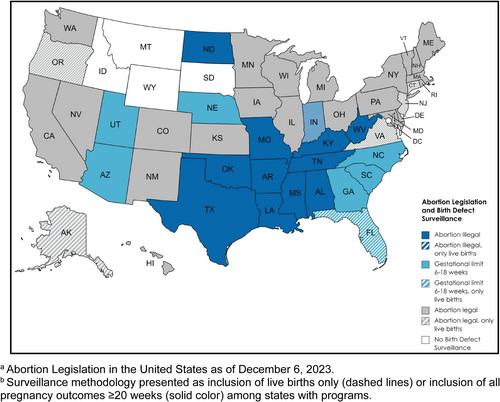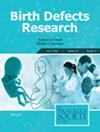Surveillance of birth defects is critical to track prevalence and inform prevention efforts. Previous studies suggest that restricting abortion may lead to an increase in birth defect prevalence. However, it is unclear how abortion legislation will impact birth defect prevalence estimates reported by state-based surveillance programs.
We described current abortion legislation and surveillance program methodology, by state, as a foundation for understanding the program-level impact on surveillance. We estimated the quantitative effect of abortion legislation on birth defect prevalence for various scenarios using first-order Monte Carlo simulation. Finally, we discuss the implications for interpreting birth defect prevalence estimates following abortion legislation.
Among states that restrict abortion ≤18 weeks and have a surveillance program (N = 19), eight programs (42%) capture elective terminations (<20 weeks) and 17 (89%) include fetal deaths (≥20 weeks) in their estimates. Abortion bans increased the prevalence of any birth defect by 16.6%, 15.8%, and 8.7% for systems with live births only, all outcomes ≥20-weeks, and all outcomes ≥10-weeks, respectively. We found the largest change in prevalence for anencephaly with an estimated 32.5% increase among systems with live births only.
Abortion legislation is likely to further exacerbate the difficulties of multi-state birth defect research and surveillance, while also hindering analysis of intra-state prevalence trends. Birth defect surveillance systems in states with abortion bans may wish to consider monitoring and reporting changes in pregnancy outcomes and infant survival, in addition to birth defect prevalence, to inform public health and health care service needs.



